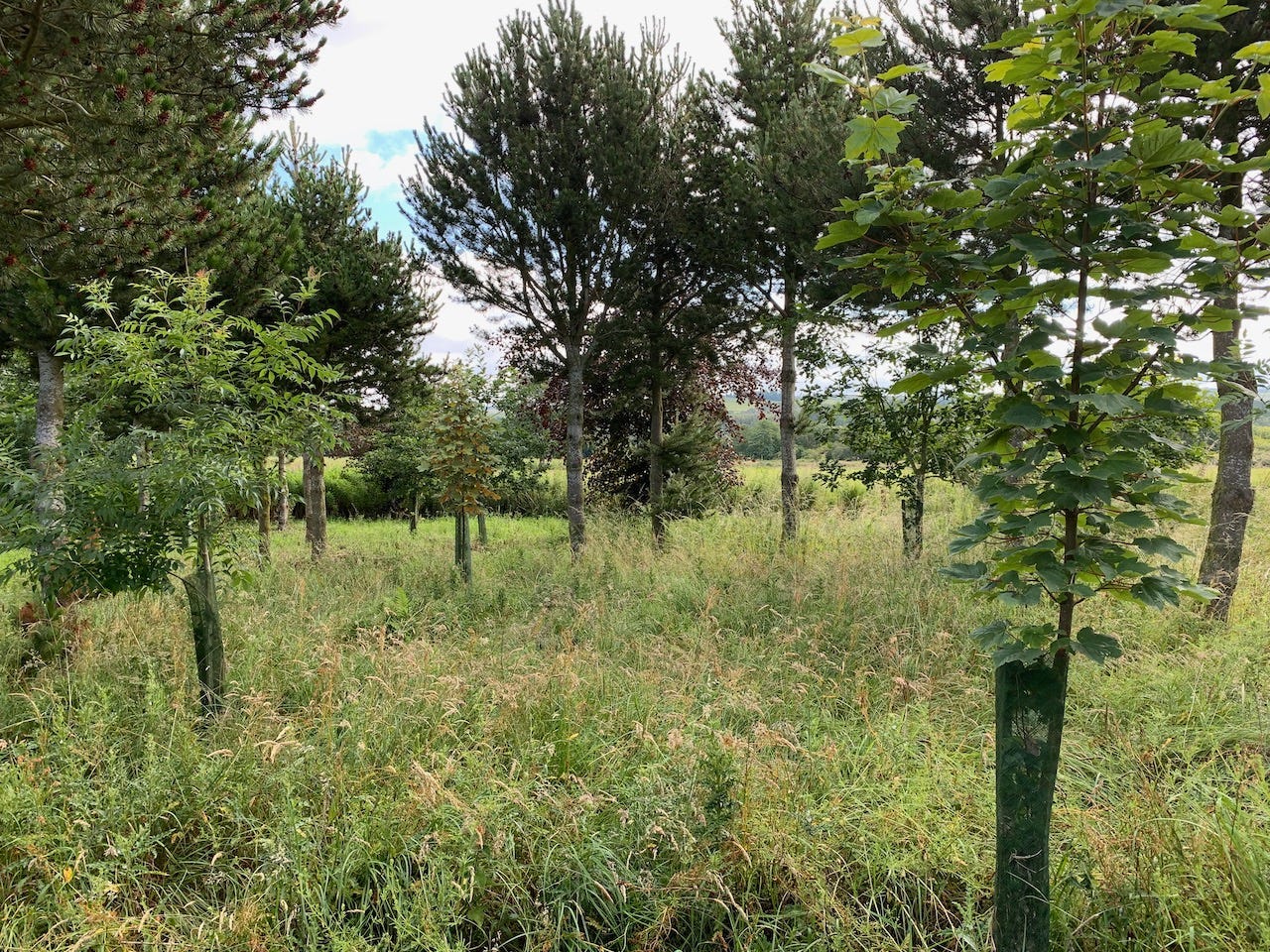Establishing a New Woodland. Part 1: Planning
This is not an article about the technology, product or business topics I usually write about. It is the story of planting a new 0.75 Hectare (1.8 Acres) woodland. There are undoubtedly some lessons for CTOs, Product Managers and Startup owners in here somewhere but I’m not going to attempt to find them; I’ll leave that up to you if you’re so motivated!
Three years ago my wife and I fulfilled a life-long dream we hadn’t realised we had and bought a small hill farm in a remote and rural part of North East England; beautiful views, open skies, isolation and room to breath. And a chance to try and align our lifestyle better with issues that matter to us such as sustainable living and climate change.
Our ambition is to become carbon negative by 2025 whilst respecting the history and tradition of the place we have taken temporary custody of. We have lots of plans and ideas but the first step we wanted to take was to start to re-wild some of the grazing land we now own and specifically to plant more woodland.
The house came with 0.6 Hectares (1.5 Acres) of mixed woodland planted about 15 years before by the previous owner who had been a forester. The weekend before we moved in he kindly gave us a crash course in woodland management.




Our plan was to plant the new woodland adjacent to this to extend the overall coverage and also to create a large open area sheltered from the wind (more on that later).

Having never done anything like this before, we read various websites and documents and decided to apply for a grant from the Woodland Trust. Their MOREWoods scheme for any new plantation of more than 0.5 Hectare doesn’t just subsidise the planting of new trees but also comes with a load of advice on what and how to plant, and they take care of the logistics of ordering and delivery.
Application is pretty straightforward and can be done online with a few questions on things like access, existing trees, conservation areas, preservation orders, etc. You also need to create a simple diagram of where the trees will go similar to the one above and an arial photo of the wider area the woodland will sit in; all made very easy with the various mapping services available. We made the application on 4th May 2020 and got provisional approval within 6 weeks.
The best part of working with the Woodland Trust was getting a visit from one of their Woodland Creation Advisors who came in late July and spent a couple of hours with us looking at the existing woodland, walking the proposed site for the new woodland, chatting about what why we wanted to plant new trees and so on.
As we walked through the existing woodland the advisor explained that the type of planting used there — where trees of a number of species are dotted around pretty much at random — had fallen out of favour and, instead, the current thinking is to plant trees in ‘family groups’ of 10 or more. This resonates with what I’d been reading in The Hidden Life of Trees about how trees help each other grow and ‘look after’ each other when conditions are hard.
The advisor was also very passionate about planting species of trees that would have been growing here hundreds of years ago before the land was cleared for farming. There is a small brook running along the northern edge of the field with some ancient trees and she talked about planting to ‘support’ these as well as to ‘soften’ the necessary man-made boundaries. The western edge is a cattle fence that we need to retain for the time being but could be replaced with a traditional Hawthorn hedge. The southern and eastern edges are traditional dry stone walls; beautiful in their own right and so to be complimented rather than hidden or replaced.
A couple of weeks after the visit we received the advisor’s report that recommended the quantity and mix of trees to plant at varying degrees of density to achieve the sheltered area we wanted to create along with some pathways and access for a medium-sized vehicle if required (again, more on that later):

From this list I produced an initial planting plan:

The second part of this article deals with preparing the site and ourselves for the delivery of the trees. Establishing a New Woodland. Part 2: Preparation
